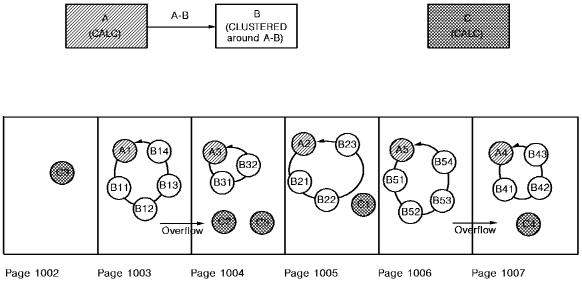

If occurrences of several entity types are randomized in one area or if an insufficient number of pages exists for the number of occurrences of one CALC entity type, CALC overflow conditions can occur.
Suppose an area contains two CALC entity types, A and C, and one clustered entity type, B, that is clustered through the A-B relationship. One A and four B entities fill a page, so that in several instances there is no room for a C entity randomizing to the same page. CALC overflow can occur in this situation, as shown below.
In this instance, A and B entities have filled pages 1003 and 1006, and have caused C2 and C4 to overflow to the next page. Two accesses are required to retrieve these entities.

Some overflow should be expected. Be concerned if a high percentage (more than 25%) of CALC entities overflow.
Reducing overflow
To reduce overflow:
|
Copyright © 2014 CA.
All rights reserved.
|
|